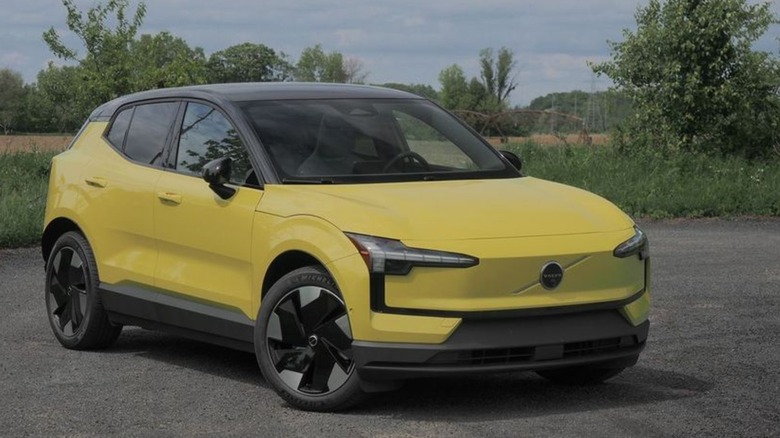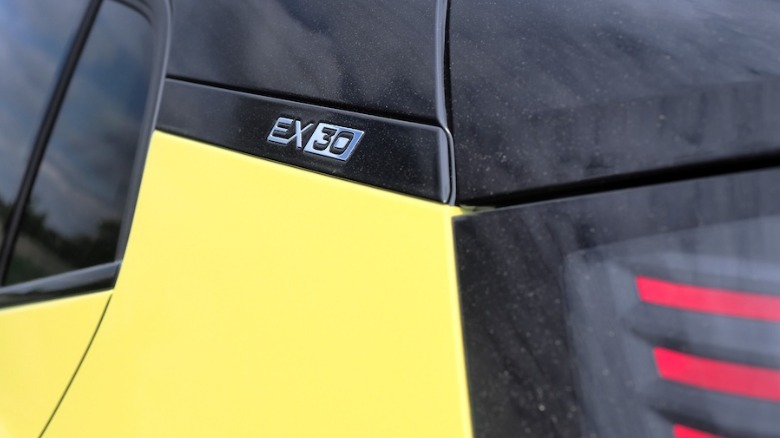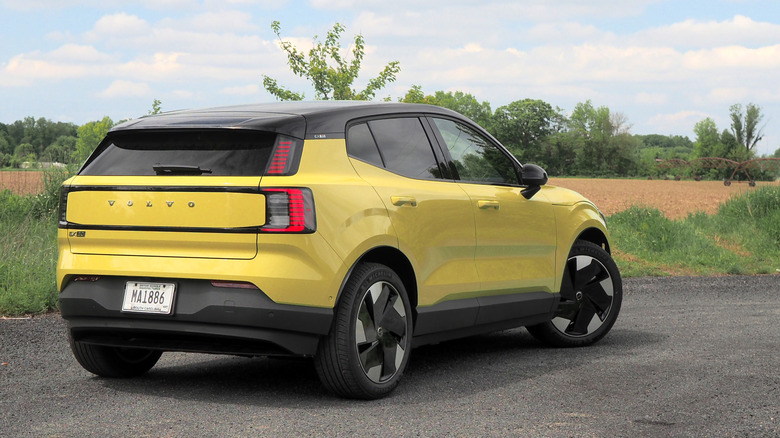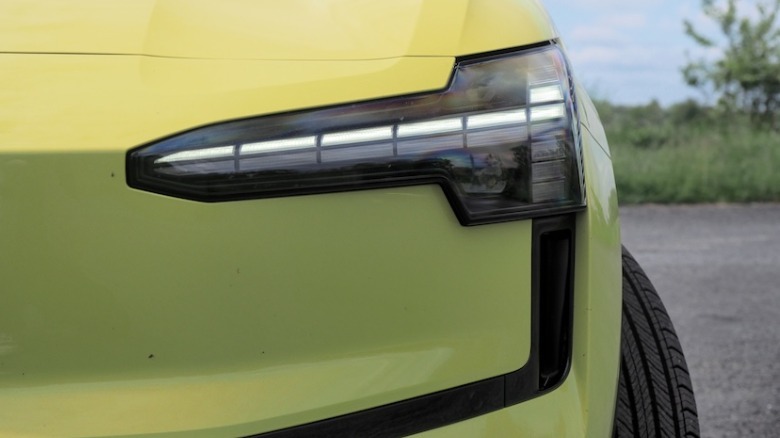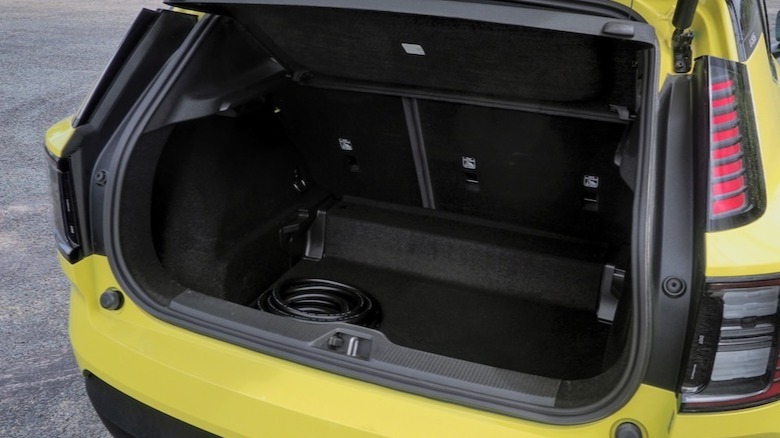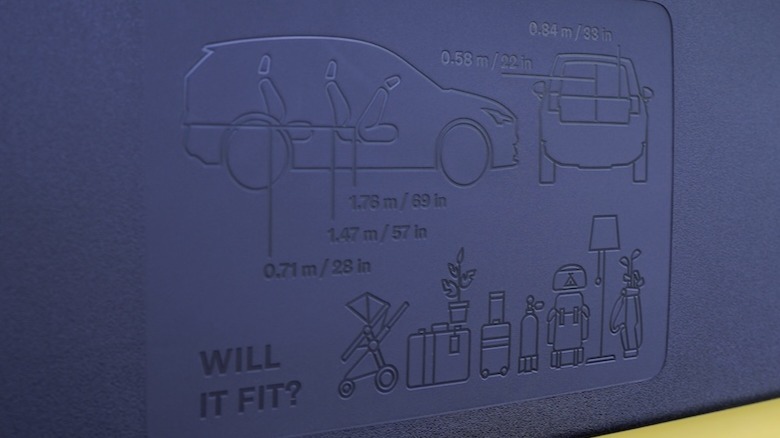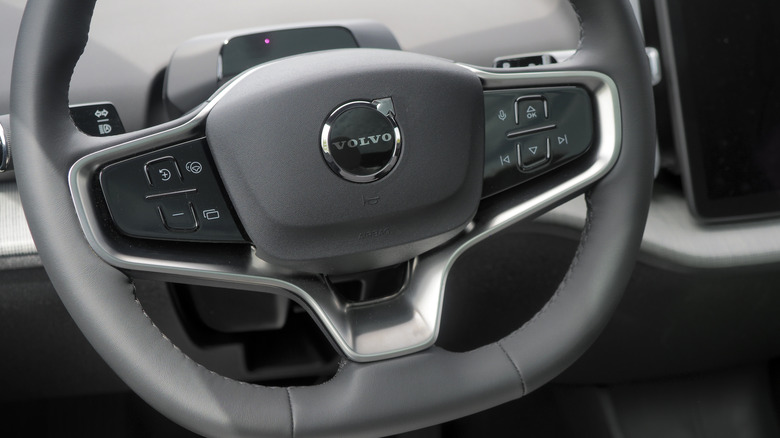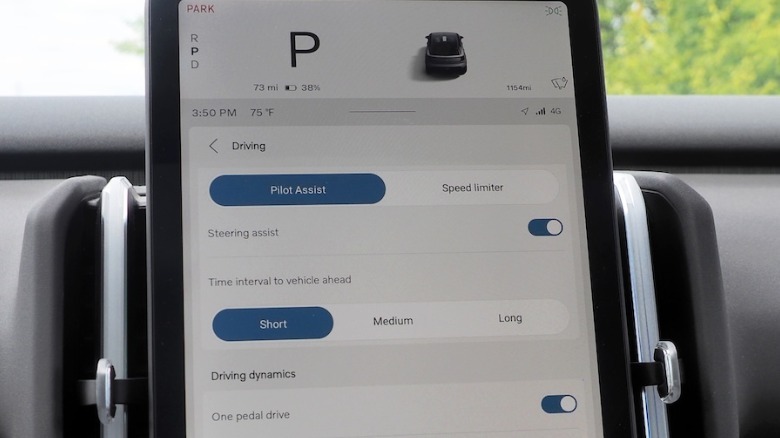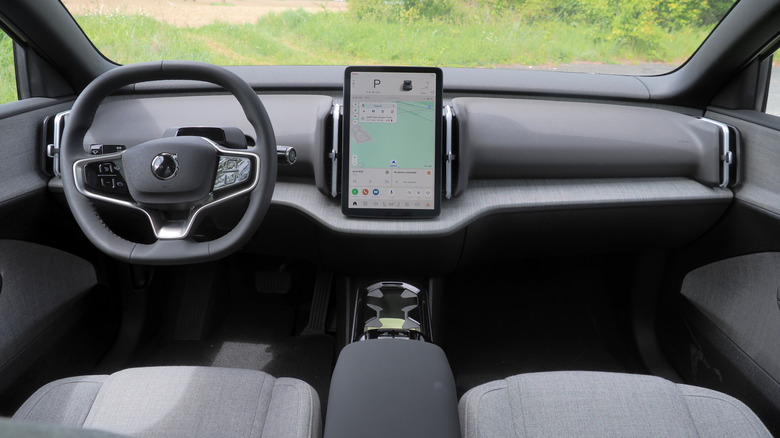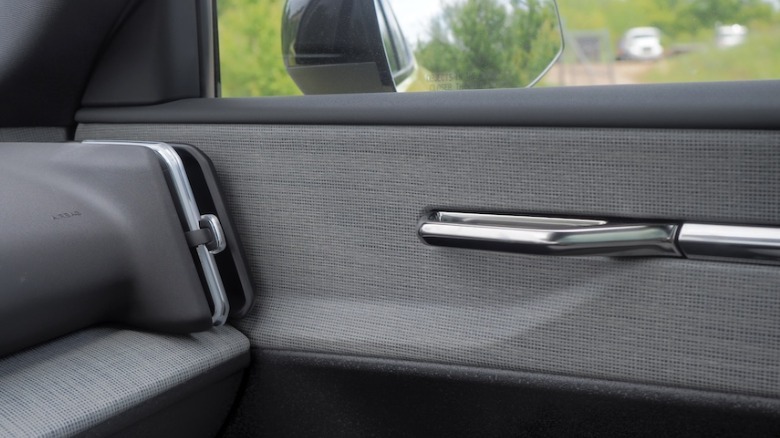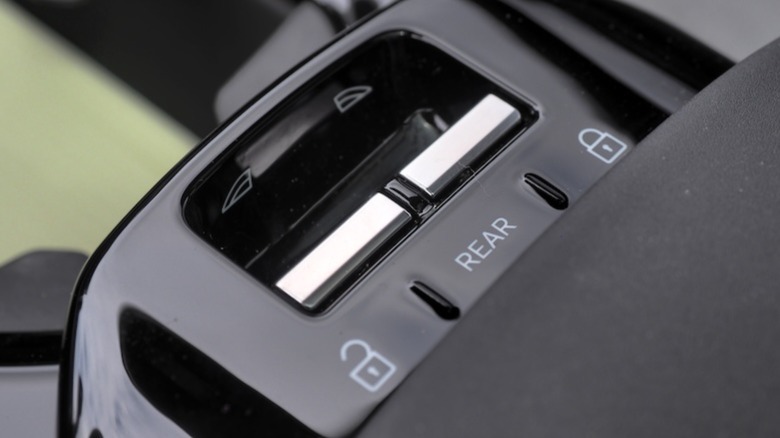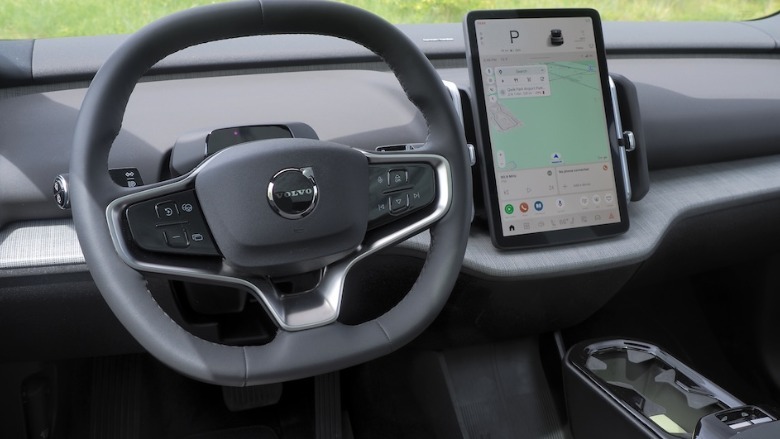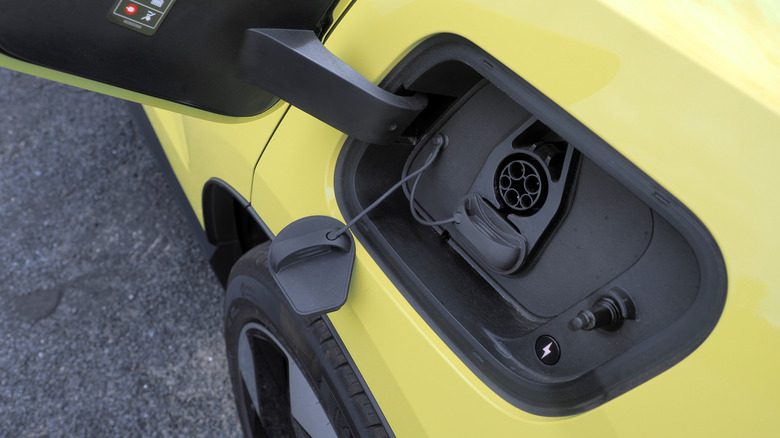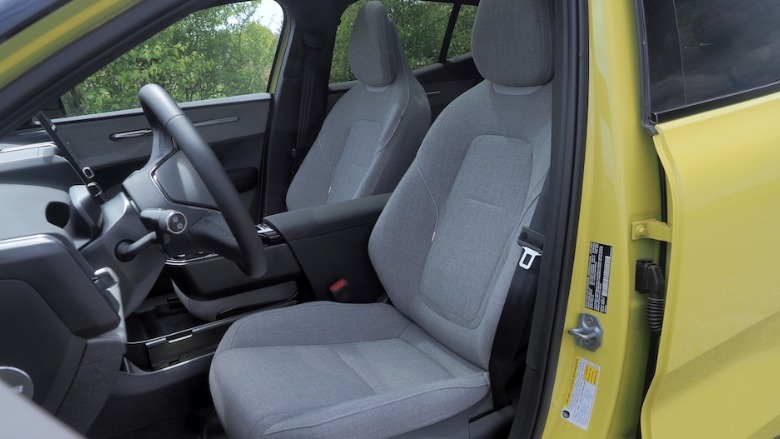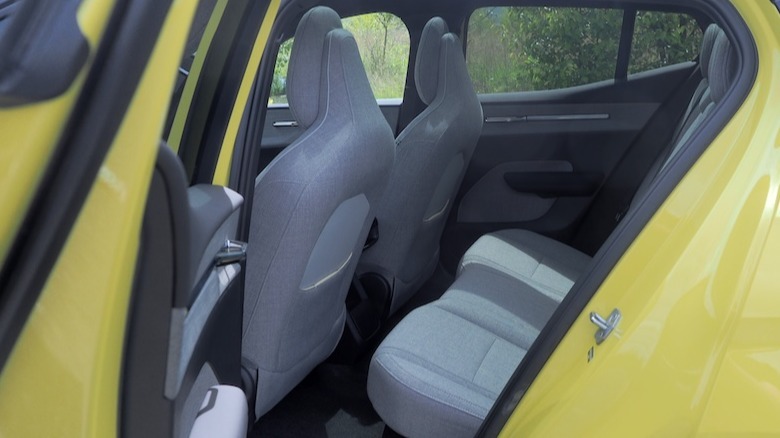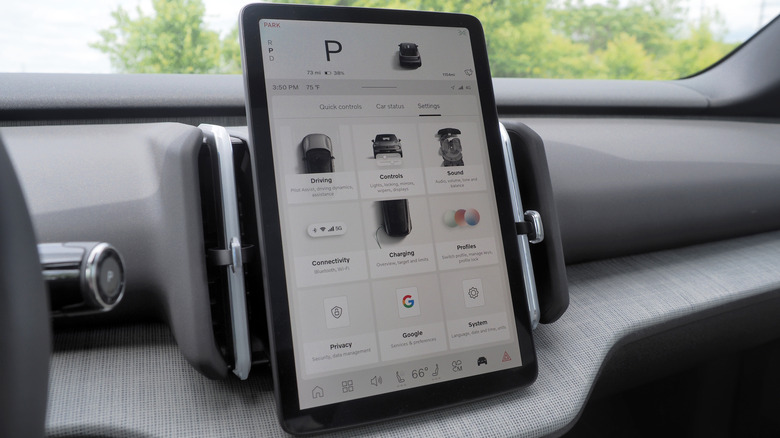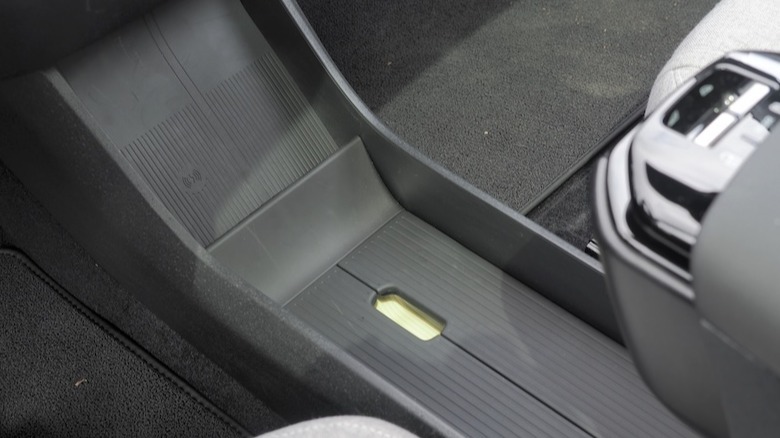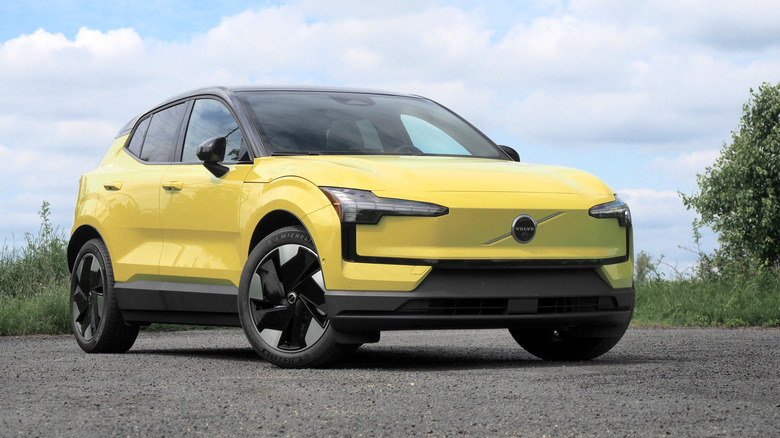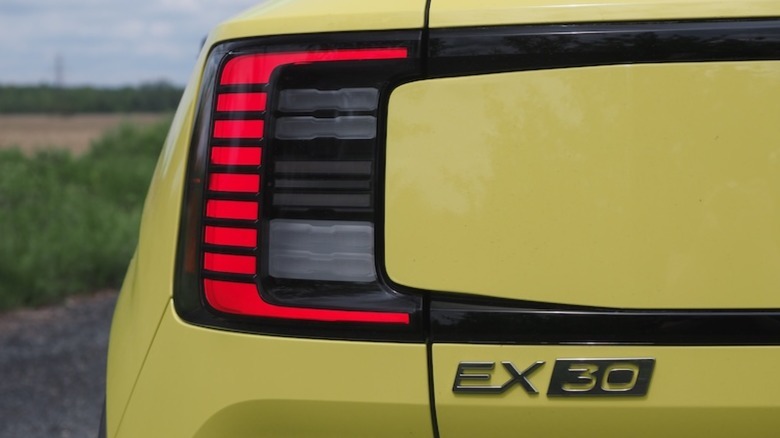2025 Volvo EX30 Review: Twin Motor EV Is Quick, But Life Comes At You Faster
It was meant to be so different, for the 2025 Volvo EX30. The smallest EV in the automaker's line-up was supposed to come with a surprisingly small price tag, too; a rejoinder to criticisms that electrification in the U.S. has been, and remains, the preserve of the wealthy. It wouldn't be Volvo's first EV, but 275 miles of driving for under $35k, in a vehicle that didn't sacrifice distinctive style or creature comforts, felt pitch-perfect.
Life comes at you fast, though. Shifting legislation around EV production upended Volvo's roadmap: the China-built EX30 suddenly faced much higher import tariffs. Volvo added production in Belgium, only for wider import tariffs to hit there, too. Rather than its cheapest configuration, U.S. orders for which still appear to be on hiatus, shipments began of the most expensive EX30 Twin Motor Performance.
Though faster, more sure-footed with all-wheel drive, and better-equipped, that also comes with a beefier price tag: from $46,600 (plus $1,295 destination) in Plus trim. Don't expect U.S. federal incentives or tax credits to suck any of that sting, either.
Compact comes with some downsides
Even if you don't opt for the first-year-only Moss Yellow (a weird name for what's really a banana-like hue) the EX30 should turn heads. The short overhangs, swooping shoulder line, and chunky wheels — 19-inches as standard — leave it straddling a little-explored line between crossover and hatchback. With its lantern jaw and pixel-style headlamps, I think it looks tremendous.
All twin-motor versions of the EX30 get a fixed panoramic glass roof (sadly with no sunshade) and a power tailgate. An optional retractable trailer hitch helps make use of the 2,000 pound tow rating. If Volvo's lichen-on-granite-inspired (no, seriously) yellow isn't your thing, there are blue, white, black, and gray options.
At just shy of 14 feet, though — a mere 20-inches longer than a Chevy Spark EV — there are space compromises to be made. Specifically, the rear legroom is decidedly snug, though the EX30's 12.4 cu-ft trunk (with a handy lower compartment) and 0.2 cu-ft frunk aren't dire.
Drop the 60/40 rear bench and the trunk expands to 27.8 cu-ft. Volvo's charming "Will It Fit?" infographic is an IKEA-like illustration of what that should hold.
Legitimately quick
In Twin Motor Performance form, each axle gets its own electric motor for a total of 422 horsepower (315 kW) and 400 lb-ft of torque. We may be gradually getting used to sky-high power numbers on EVs, but it's still fair to say these are wild figures for a diminutive car like the EX30. Enough to propel the 4,151 pound Volvo from 0-60 mph in just 3.4 seconds, the automaker claims.
That's quickness which, not all that long ago, would've required a genuine sports car to achieve. Here, it's readily on tap in a city runabout. Volvo doesn't confuse matters with a plethora of drive modes, either. There's a one-pedal drive mode, a choice of three steering weight settings (still light even at the firmest option), and a Performance All-Wheel Drive mode (which also disables one-pedal driving) described as prioritizing performance over range.
Either way, the EX30 is enjoyably eager. In fact, puppy-like describes the driving dynamics pretty accurately. With its short wheelbase and firm suspension, the little Volvo darts and scampers; you can practically hear it giggling at ruts and bumps that are not so much smoothed out as shaken off.
The devil's in the details
Considering the EX30 is meant to be an affordable EV, some of the detailing here is astonishing. The interior door handles, for example, are sleek metal loops that wouldn't feel out of place in an architectural showcase; Volvo's air vent design has a charmingly Art Deco edge to it, classy without erring into pastiche. The seat and dashboard fabrics may have been selected for their eco-friendliness, but they also feel bright and modern.
Elsewhere, that crisp vision of a minimalist future flirts with being somewhat too sparse. The single control for the front seat adjustment is ergonomic, but moving the side mirrors and steering wheel via software menus is as annoying here as in any other car that ditched physical switchgear.
Putting the window switches in the center armrest not the doors is fine, but doing away with rear window controls for the driver (you have to toggle between front and back with a separate button, like in some Volkswagen EVs, and often I accidentally hit the door lock/unlock buttons instead) is needlessly tedious. A head-up display would be welcome here, even if it only showed your current speed and remaining range.
One touchscreen to (frustratingly) rule it all
Instead, Volvo's Google-powered 12.3-inch touchscreen shows speed and the view of the various external sensors while you're driving, as well as all the options for controlling the driver assistance systems, and even an on-screen button for popping the glovebox (which is actually a small cubby underneath the screen, in the center). That can mean a fair few taps to find the buttons you want, though in theory you can also use the Google Assistant for natural-language voice control over not just media and navigation, but car features too.
My results there were mixed, and for once it wasn't my British accent spoiling things. "Hey Google, close the windows" worked; "open the windows" only cracked them by an inch or so. I could turn on seat heating by voice, but control over other car features led to regretful apologies. I couldn't find a way to have it report every single supported command, so expect some trial-and-error.
Range in the middle of the pack, and charging to match
With only one drivetrain configuration offered in the U.S., the dual-motor EX30's 69 kWh (gross) battery promises 253 miles on the EPA's test cycle. That's less than the 290 miles a Hyundai Ioniq 5 AWD is rated for, though the Hyundai needs a larger, 84 kWh battery to do that. The Ioniq 5 is slightly down on horsepower but up on torque, versus the Volvo, not to mention about 500 pounds heavier.
In my own, mixed driving, the EX30's trip computer suggested I was getting 3.2 miles per kWh. That edges the Volvo ahead of the Genesis GV60, which is down on horsepower and up on torque, despite costing from $56k for its cheapest all-wheel drive configuration. It's rated at 264 miles of range, though the more potent GV60 Performance AWD fell just short of 3.0 miles per kWh in my own testing.
Come time to charge, and there's onboard 11 kW Level 2 support — figure on around eight hours in your garage, assuming you have the right L2 charger installed — along with up to 153 kW DC fast charging. That means a 10-80% charge in just shy of 27 minutes, Volvo says. Not shameful, but slower than the Ioniq 5's 20 minutes to do the same.
Safety tech is plentiful (and loud)
Since this is a Volvo, there's a fair amount of standard safety tech. Blind spot warnings with steering-assist and cross-traffic alerts; collision avoidance with vehicle, pedestrian, and cyclist detection; lane-departure and lane-keep assist; and oncoming lane collision mitigation are all standard. Ultra trim adds a 360-degree camera, Pilot Assist — Volvo's hands-on adaptive cruise control with lane-keeping system for highways — and parking assist.
The safety gadgets are on by default, and if you spend time tapping through the infotainment touchscreen to change that — say, to switch off the annoyingly touchy lane-drift warning, which seems convinced the EX30 is a far wider car than it actually is — there's a good chance the alert-to-the-point-of-aggravating driver attention monitor will yell at you. Few cars, including those with actual hands-off driver assistance tech, are so demanding as the EX30 when it comes to looking steadfastly ahead.
It's not the only software annoyance. Wireless Apple CarPlay worked fine for me — there's a wireless charging pad, plus several USB-C ports including some under a nifty dual-layer bin between the front seats — but the absence of a regular key fob in favor of NFC cards, a buttonless tag, or phone-as-key led to some "amusing" moments where I'd either be yanking an unresponsive handle or doubling-back uncertain whether the Volvo had locked behind me. Over-the-air updates could probably address a lot of this, but who knows how high your blood pressure might be when that moment arrives.
2025 Volvo EX30 verdict
It's hard not to feel a melancholy sense of "what could've been" with the EX30. Had Volvo's plans gone uninterrupted, this Performance version would've been the pricier (not to mention speedier) version to a cheaper, $34,950 (plus destination, before any incentives) single-motor EX30, with a useful 275 miles of range. While maybe not the model of choice for those drivers in cold weather states, that would've undercut the most affordable Model 3 by more than $7,000.
From $46,600 — before destination, and the Ultra and Climate packages that altogether take this particular yellow example to $48,395 all-in — the dinky Volvo finds itself in more strongly contested waters. Mass-market EVs from Ford, Hyundai, Kia, and others on one side; premium options from the likes of Genesis and Audi on the other. Many of which are also eligible for incentives (at least at time of publication) that the Volvo misses out on.
That the EX30 remains so appealing despite that cohort speaks to Volvo's decisions around style and driving dynamics, its attention to detail in terms of cabin design and quality, and the difficult-to-quantify charm of a small but potent car. It tickles the parts of the brain that the Rivian R3 strummed so successfully upon its reveal last year, not to mention feeling luxurious without necessarily aping the materials and style of "traditional" luxury models. Those on a strict budget or with frequent rear seat passengers may want to look elsewhere, but if personality matters to you, this Volvo has it in spades.
